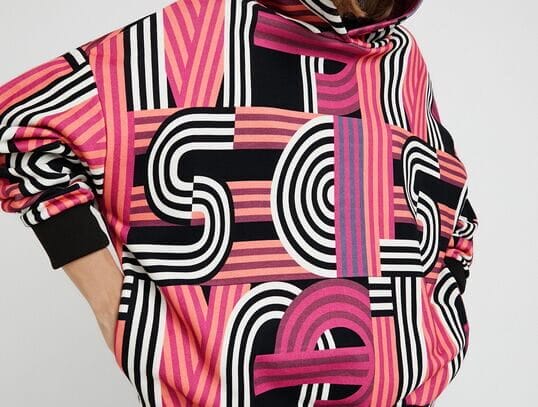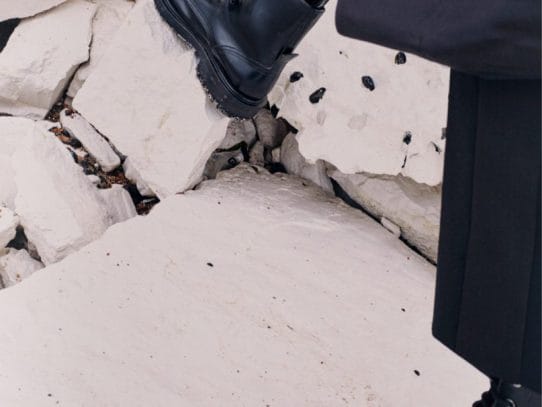Pharrell Williams x Louis Vuitton: Elevating Skiwear to New Height
Skiing has long been a beloved winter sport, but its origins date back thousands of years. The earliest evidence of skiing is found in Norway, where cave paintings dating back to 5000 BC depict skiers using primitive wooden skis. However, it was in Scandinavia, particularly Norway, where skiing evolved into a sport during the late 19th century, thanks to pioneers like Sondre Norheim. Often referred to as the father of modern skiing, Norheim’s innovations in ski design and binding mechanisms revolutionized the sport, setting the stage for the skiwear industry to follow.
The Birth of Skiwear: Who Invented It and Where It Stands Today
The history of dedicated skiwear dates back to the 1930s. Austrian company Lothar Danner is credited with producing the first ski suit, designed to keep athletes warm and protected from the elements. The brand quickly became a staple for skiers worldwide, and while the company no longer exists in its original form, its innovations laid the groundwork for the high-performance skiwear we see today. Fast forward to the present, skiwear has evolved into a multi-billion dollar industry in the USA alone, generating over $1.5 billion in annual revenue, as both fashion and function take center stage on the slopes.
Skiwear Technology: The Intersection of Fashion and Function
Technological advancements have played a monumental role in the development of modern skiwear. Today’s ski apparel is designed with cutting-edge materials that offer warmth without the bulk, high resilience, and unparalleled stretchability. Brands have pioneered lightweight fabrics that are windproof, waterproof, and breathable, incorporating features like moisture-wicking layers and thermal insulation to enhance performance. The introduction of smart textiles, temperature regulation, and stretch fabrics has also reshaped how athletes and casual skiers alike experience the slopes. Skiwear has paved the way for the broader fashion industry to adopt these innovations.
Louis Vuitton Enters the Slopes: A New Era of Luxury Skiwear
Louis Vuitton (LV), the iconic luxury brand, introduced its first ski collection in 2018. Crafted for the discerning skier, the LV Ski line blends heritage craftsmanship with cutting-edge technical innovation. Today, Pharrell Williams, Men’s Creative Director, brings his bold vision to the 2025 Ski Collection, designed not just for performance but for those seeking an elevated aesthetic. The line, manufactured in the heart of Europe’s fashion capitals, is a testament to LV’s commitment to sustainable practices, using recycled polyamide, polyester, and organic cotton.


In the U.S., most skiers tend to gravitate towards trusted, performance-driven brands like Patagonia, Arc’teryx, and The North Face—companies known for their durability, technical innovation, and long-standing presence in alpine sports. The challenge for Louis Vuitton’s ski collection, despite its undeniable craftsmanship and the creative vision of Pharrell Williams, is whether it can resonate with this performance-focused audience. While Pharrell’s name carries immense cultural weight, it may not yet hold the same cachet on the slopes as the leading technical brands. However, for luxury destinations like St. Moritz, where fashion and function intersect, the collection could find its niche. Time will reveal whether it can truly carve out space in the highly segmented skiwear market.
As someone who has spent years studying the evolution of menswear, skiwear holds a particularly fascinating place in fashion history. Skiing as a sport dates back thousands of years, with its earliest roots in Scandinavia, where wooden skis were used for transportation across snow-covered terrain. Today, skiwear has evolved into a highly technical field, blending functionality, innovation, and style. Three important topics in the men’s skiwear and snowboarding industry that stand out to me are the integration of advanced fabric technologies, such as lightweight insulation and stretchable waterproof materials, the growing focus on sustainability as brands pivot toward eco-conscious production, and the challenge of market segmentation. While traditional performance brands dominate the scene, luxury and lifestyle-driven collections like those from Louis Vuitton are emerging, seeking to carve out a space where style and performance can coexist on the slopes. This balance of innovation, environmental responsibility, and market differentiation is the future of skiwear.



Pharrell’s approach to LV’s skiwear reflects the brand’s philosophy of creating a global community united by their love for precision, craftsmanship, and luxury. The typical LV skiwear consumer skews affluent, sophisticated, and performance-driven, while the psychographics reveal individuals who view skiing not just as a sport but as a lifestyle, merging adventure with luxury.

The 2025 Ski Collection: Style, Innovation, and Sustainability
Louis Vuitton’s 2025 Ski Collection pushes the boundaries of high fashion on the slopes. Crafted from premium, eco-friendly materials, the collection marries function and luxury with intricate details. From waterproof ski jackets featuring Monogram motifs and ski pass holders to après-ski shearling jackets with removable collars, the collection offers a seamless transition from the slopes to the chalet.
The Damoflage Snow motif is a standout design element, blending the Maison’s classic Damier chequers with camouflage, capturing the essence of the winter landscape. The collection includes technical ski suits, après-ski fleece tracksuits, and a range of accessories like mittens, scarves, and beanies—all made with the highest regard for comfort and sustainability.


Ski vs. Snowboard Fashion: Defining Styles
While skiers often gravitate toward sleek, form-fitting designs, snowboarders lean toward looser, more relaxed styles. Ski fashion emphasizes elegance and precision, with streamlined silhouettes and performance-focused garments. On the other hand, snowboard style incorporates more streetwear influences, with oversized jackets, baggier pants, and vibrant patterns that resonate with a younger demographic.


Conclusion: Get Ready for the Ride
As ski season approaches, it’s time to prepare for the slopes. Skiing is not just a sport; it’s a lifestyle, and the Louis Vuitton 2025 Ski Collection embodies this cultural phenomenon. Built with sustainable materials and a design ethos that celebrates performance, savoir-faire, and style, LV’s skiwear is ready to elevate your winter adventure. Whether you’re conquering the mountain or sipping hot cocoa by the fire, make sure your wardrobe is up to the challenge—because, in the world of skiing, the ride is just as important as the destination.
About the Author:
Joseph DeAcetis is a visionary in the world of fashion, renowned as the best wardrobe stylist and art director of his generation. His impressive accolades and unmatched expertise set him apart in the industry. Joseph covers the intersections of style, culture, art, and fashion, with a particular emphasis on the evolving status of menswear.
Throughout his illustrious career, Joseph has penned award-winning columns for top-tier publications such as Esquire, People Magazine, Robb Report, and Playboy. His profound insights and engaging narratives have made him a leading voice in fashion journalism.
Most recently, Joseph served as the creative fashion director for Forbes Media, where he excelled as both a critic and reporter. His extensive body of work highlights the importance of dressing for success and explores how technological advancements are reshaping the fashion industry. Joseph’s authoritative yet approachable voice continues to inspire and influence fashion enthusiasts worldwide.
Comments, questions, or feedback? message me at stylelujo.com
Save Article











